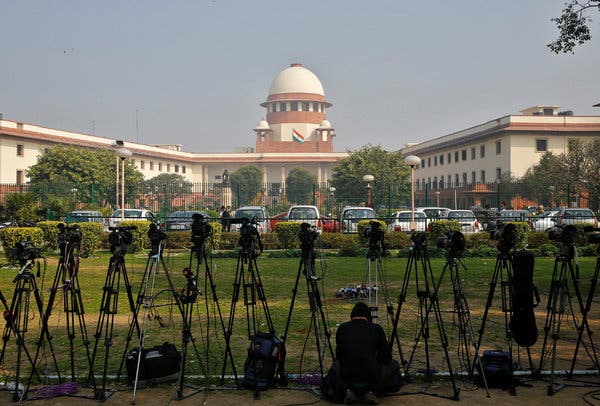App developed by two IIT-B friends helps J&K students beat slow Internet speeds
At 10.37 one morning last week, as Shakir Rashid went live with his class online, he had already been rung up by several of his students – he was seven minutes late, and they were impatient. Rashid decided to wait a few more minutes to let some more students join in. And at 10.40 am, he began his class – on the theory of demand and supply.
Rashid, who is based in Srinagar, teaches a class in a course of cost management accounting – and this is how most mornings begin. His 76 students come from nearly all districts of Jammu and Kashmir, from Doda to Shopian and Kupwara. And even at the restricted data speeds in 18 of the 20 districts in the Union Territory, the lesson hits home loud and clear.
These classes have been made possible by the use of a mobile phone application called ‘Wise App’, which has been developed by two friends from IIT-Bombay, Mubeen Masudi from Kashmir and Bilal Abidi from Lucknow. The app is a 2G-friendly video interface that allows students and teachers to cut through problems of scheduling, makes teaching and assessments over the Internet easier, and makes the experience as close to a real classroom as possible.
“Two graduates of @iitbombay have developed an Android application “Wise App” to enable #onlinelearning on the 2G service. The application is extremely user-friendly, completely free of cost and comes without any advertisements,” Minister for Education Ramesh Pokhriyal Nishank posted on Twitter on August 13.
“Kudos to the team,” the Minister said, with two thumbs-up emojis. The developers of the app were also featured on the Government of India’s 74 years, 74 series campaign, which gave it fillip and reach. A month after its launch, the app is being used by 3,000 teachers, a vast majority of whom are in J&K, and who are now able to reach thousands of students even over restricted network speeds.
“I have been an educator for the past eight years in Kashmir. During all these years I have worked directly with students, schools, local NGOs and the government’s education department. A significant part of this time has been spent in classrooms teaching mathematics and chemistry to high school students,” Masudi told The Indian Express.
Once the Covid-19 lockdown was imposed, all educational institutions were forced to move online. As a result, “every teacher, including me, faced an uphill task”, he said. “While tech-savvy teachers such as me were able to find fixes, most of the teachers, and their students, suffered.”
The challenges were compounded by the low Internet bandwidth (2G) in Kashmir. Masudi and Abidi initially found workarounds such as using whiteboard on the Zoom app instead of video, which somehow worked on 2G. However, teaching is more than just live classes, online and offline, Masoodi said.
“While everyone was fixated on the chaos around live classes – which client to use, how to share meeting Ids and passwords, etc. – equally important aspects such as assignments, testing, content-sharing, clearing of doubts, etc. took a back seat. Consequently, most of the students have been receiving inadequate or discontinuous education since March. As a teacher, I realise that for great learning outcomes, quality as well as continuity of education is very important,” he said.
From this arose the need for a platform that was easy to use, and which was accessible to students even on low bandwidth, Masudi said. The existing solutions, the developers of the app realised, were either too difficult to use for the average teacher, or solved only part of the problem.
C S Paul, vice-principal of Lucknow’s Unity College, who now uses the app, described some of the problems that teachers faced: “Every night I was on 30 to 35 WhatsApp groups, managing the next day’s classes. Scheduling and sending notifications across these different groups was a massive issue, especially for senior classes, which need greater interaction,” he said. “Additionally, 90 per cent of students did not have laptops, so there was a need for an application that could reach the largest numbers of students on mobile phones. Wise does not share the details of students with everyone.”
A unique feature of the app is the way it tracks attendance, Paul said. “There is no upper limit for enrollment but this app tells me how many students are attending. Other vendors also had apps but with Wise, at the end of the class, I get a list of who was in the class for how long,” Paul said.
For Masudi and Abidi, the purpose of Wise was to “democratise education” by empowering teachers through technology. They now hope their creation will reach all corners of the country where connectivity and slow Internet speeds are a problem.
INDIAN EXPRESS






